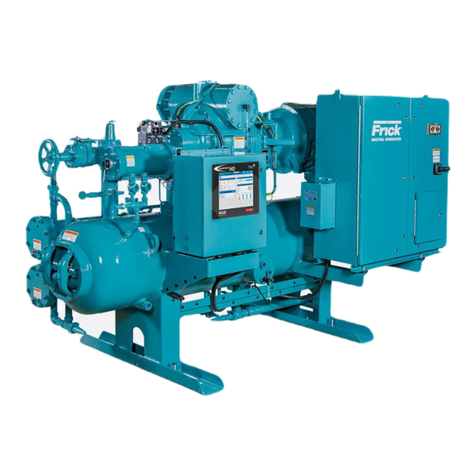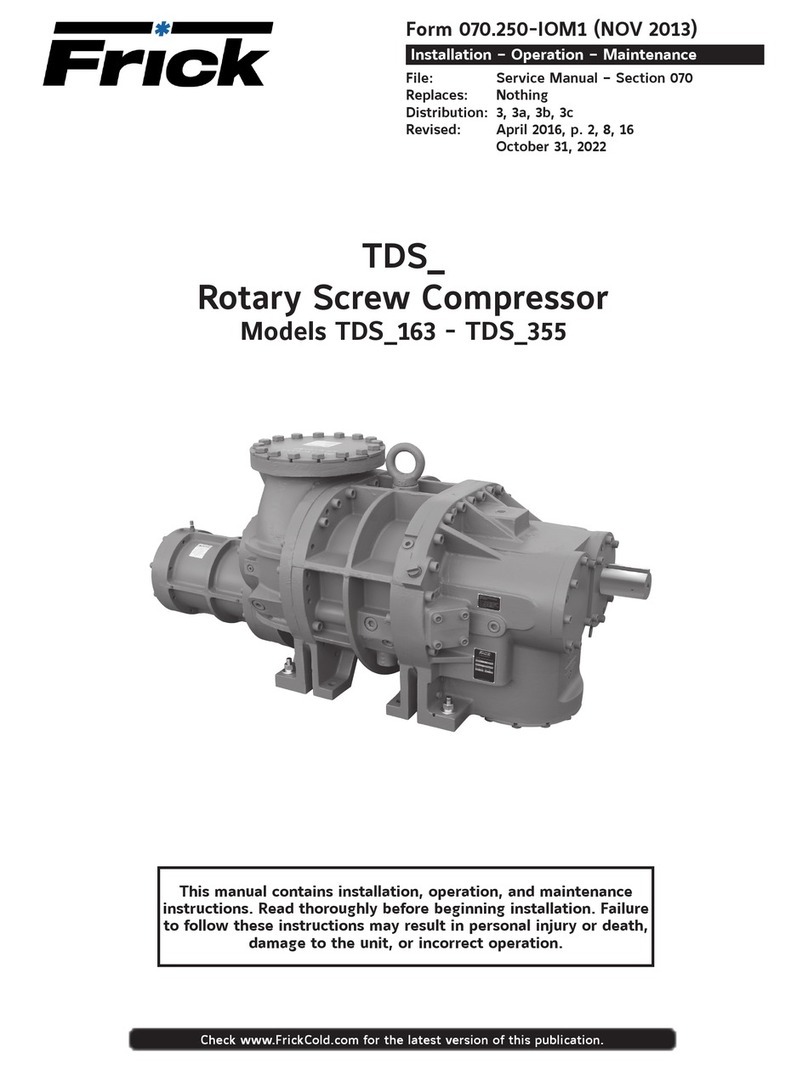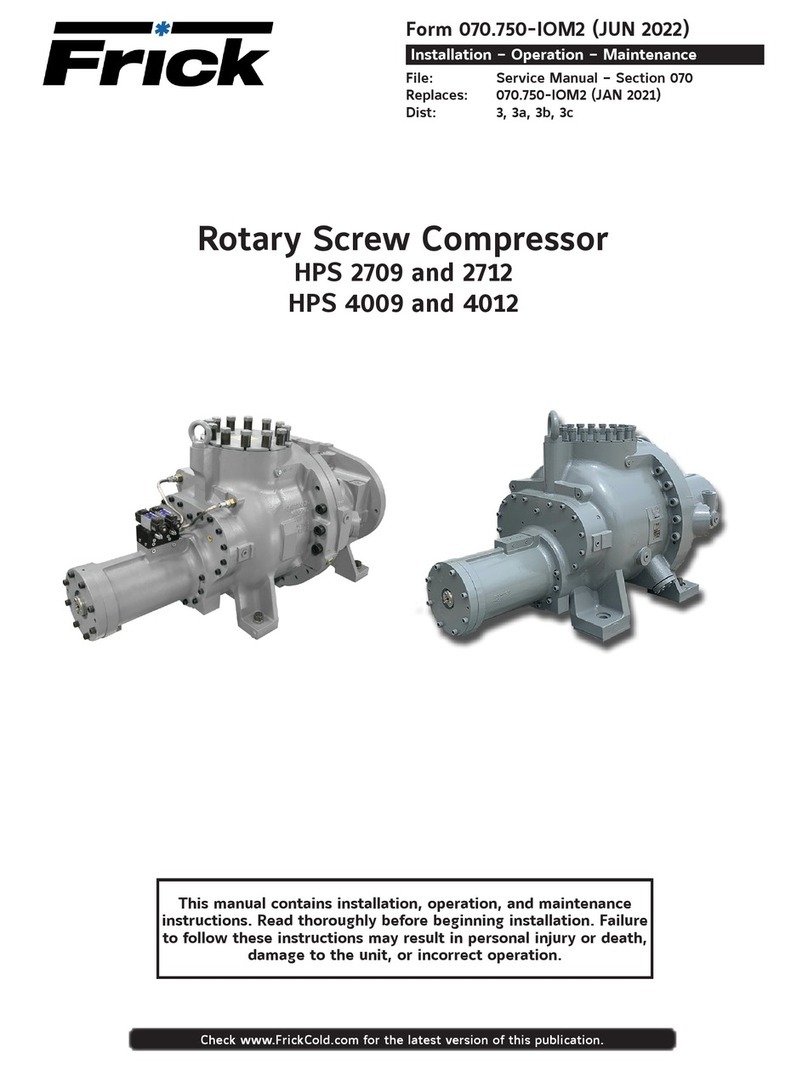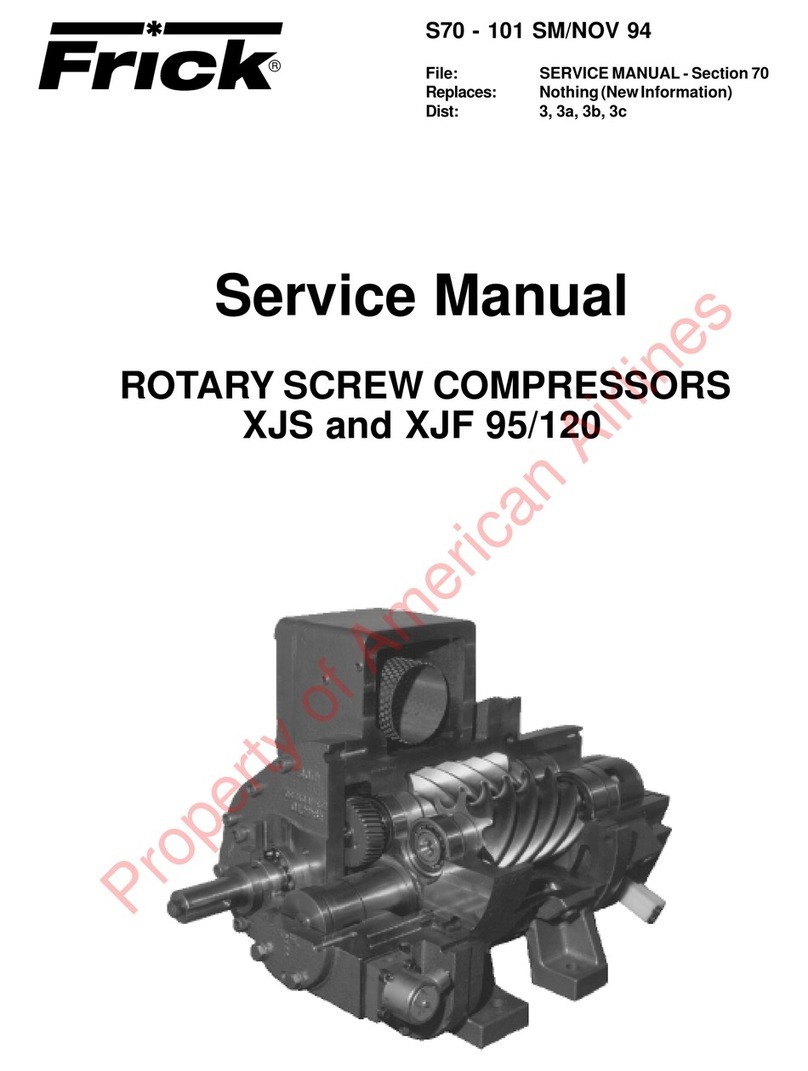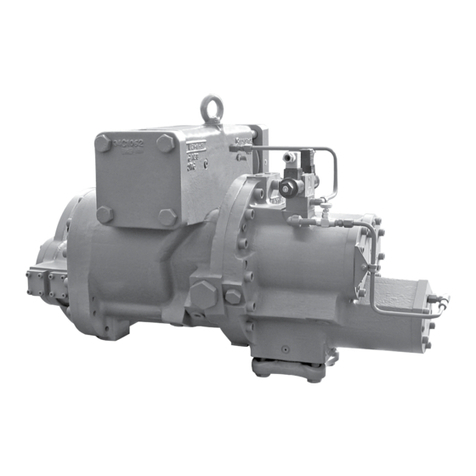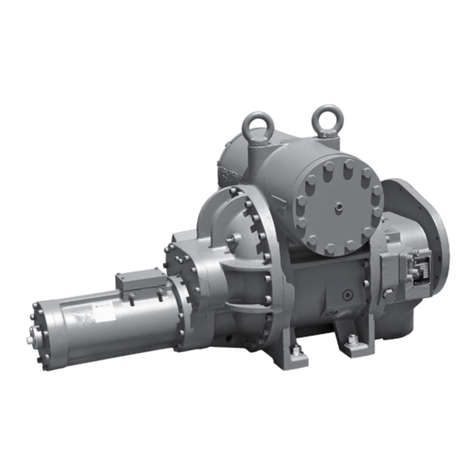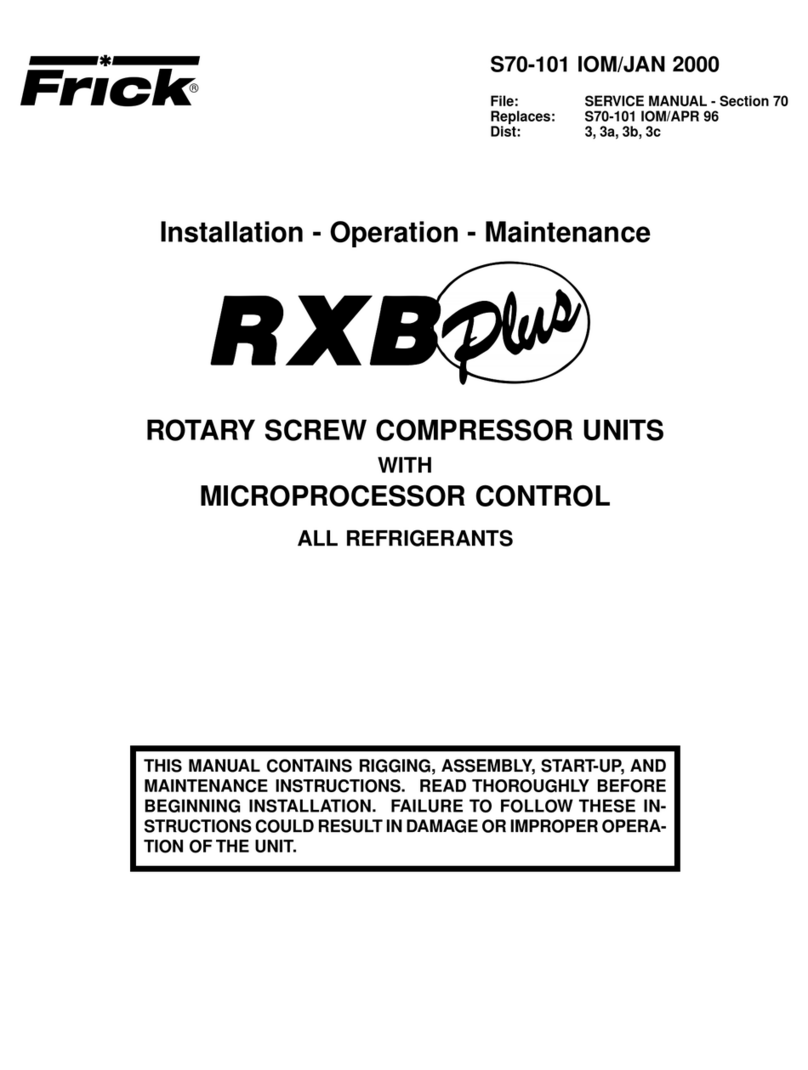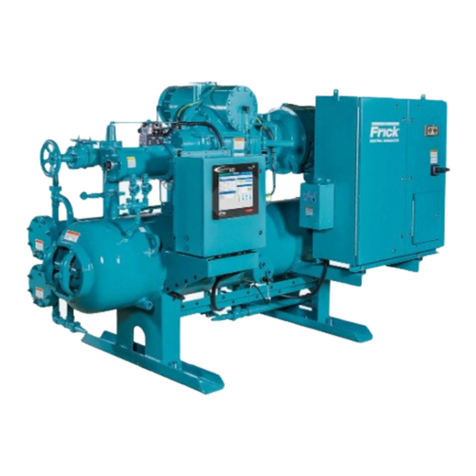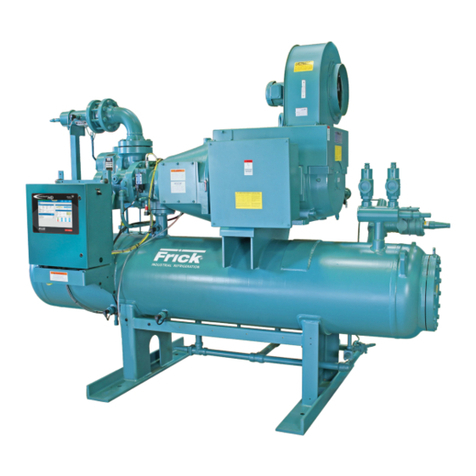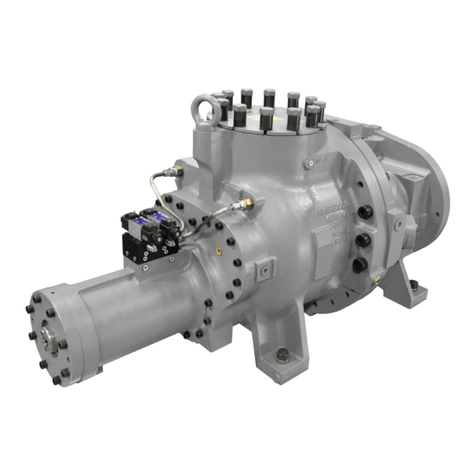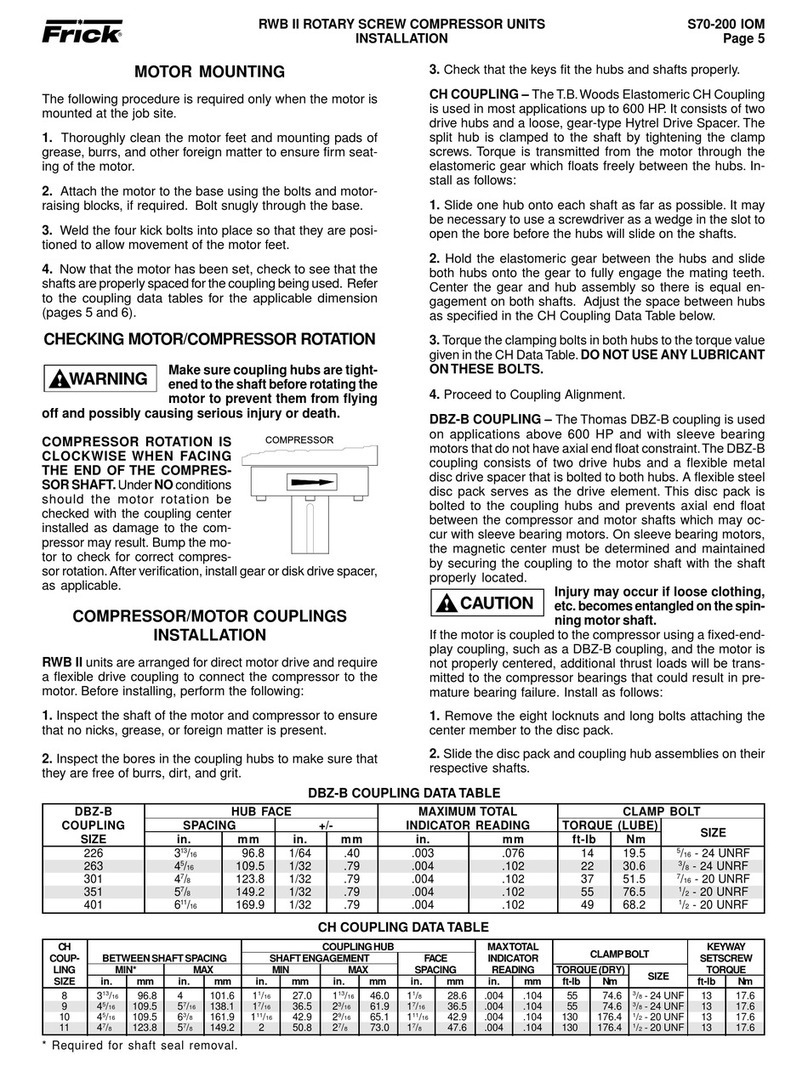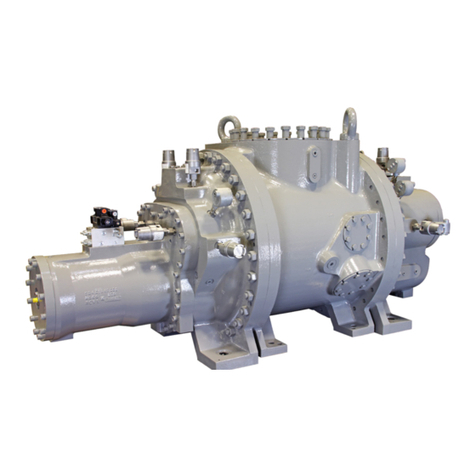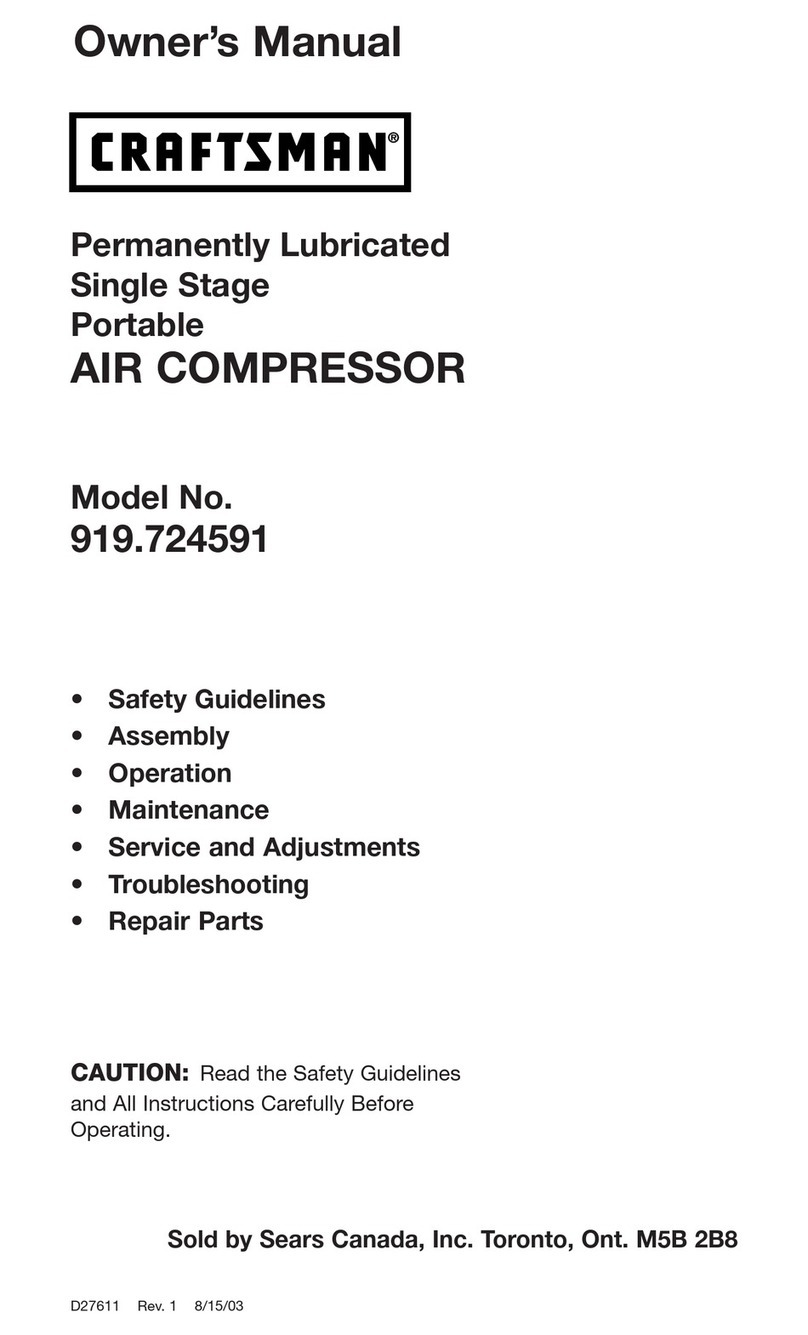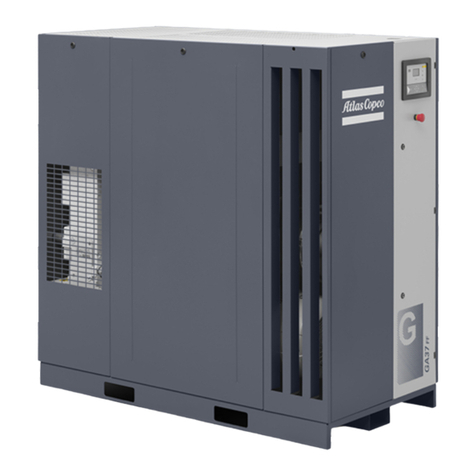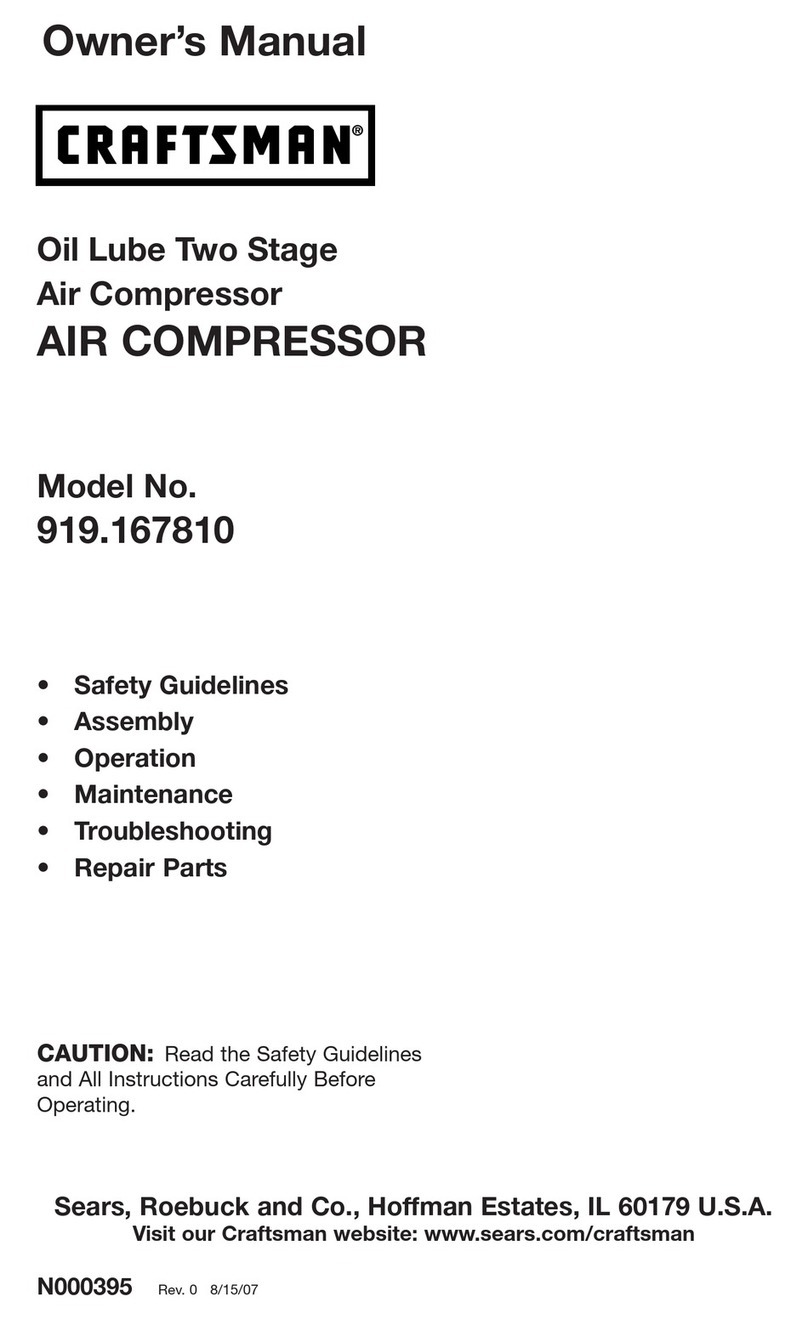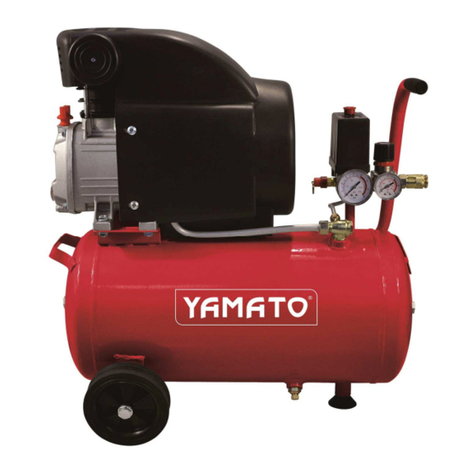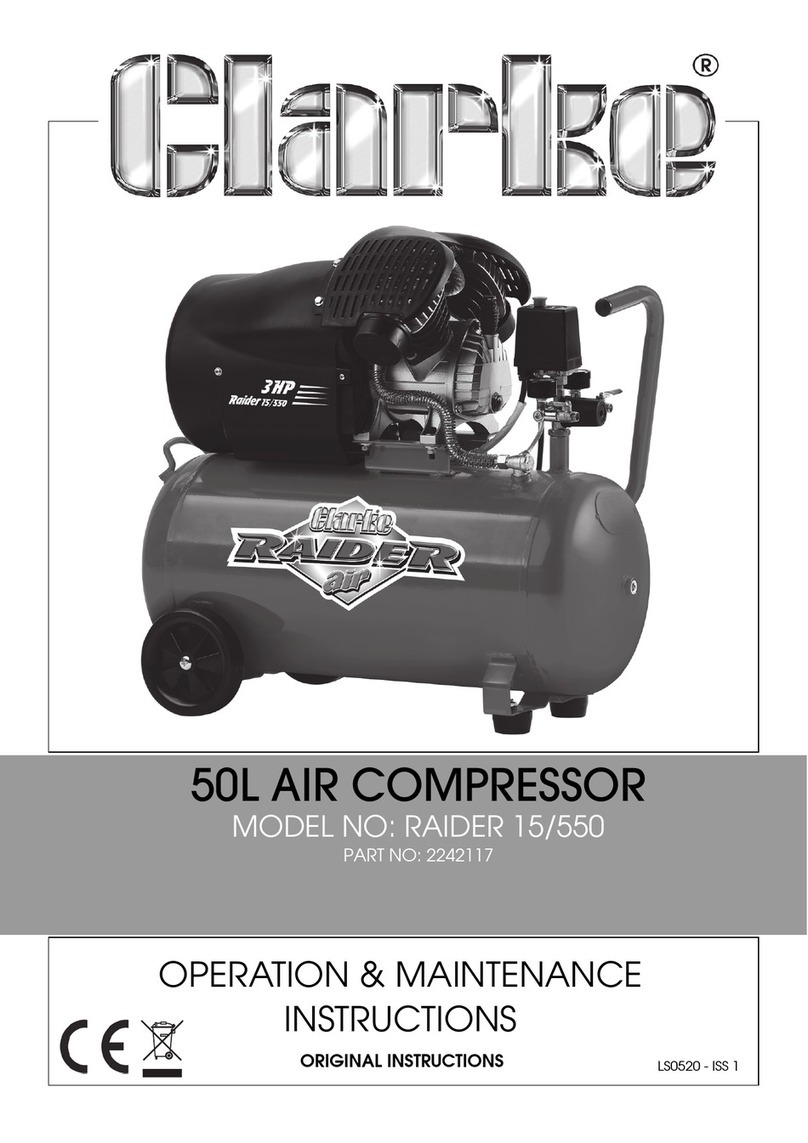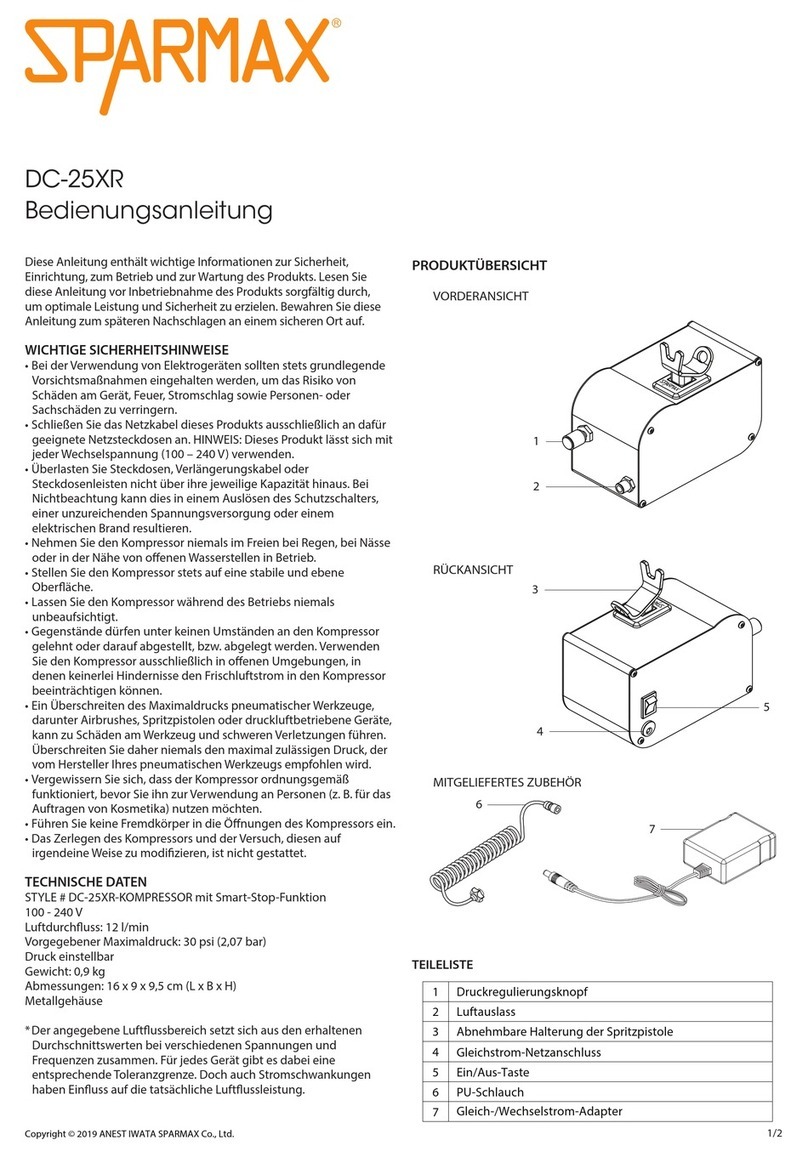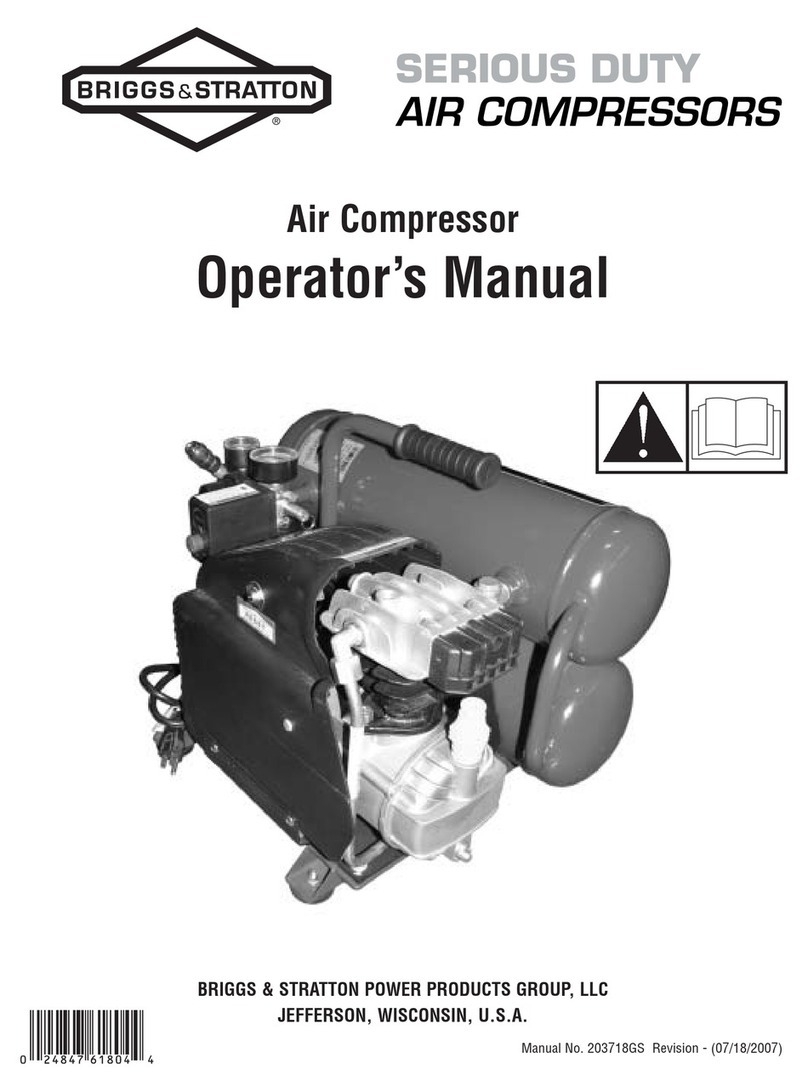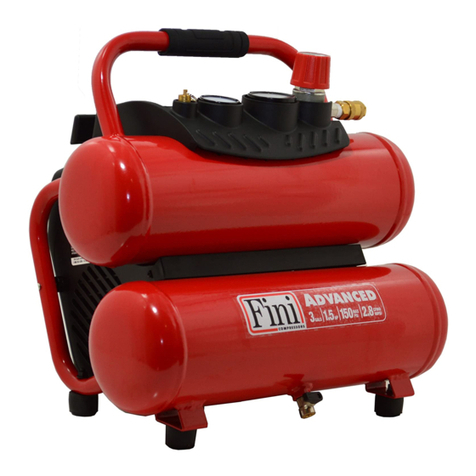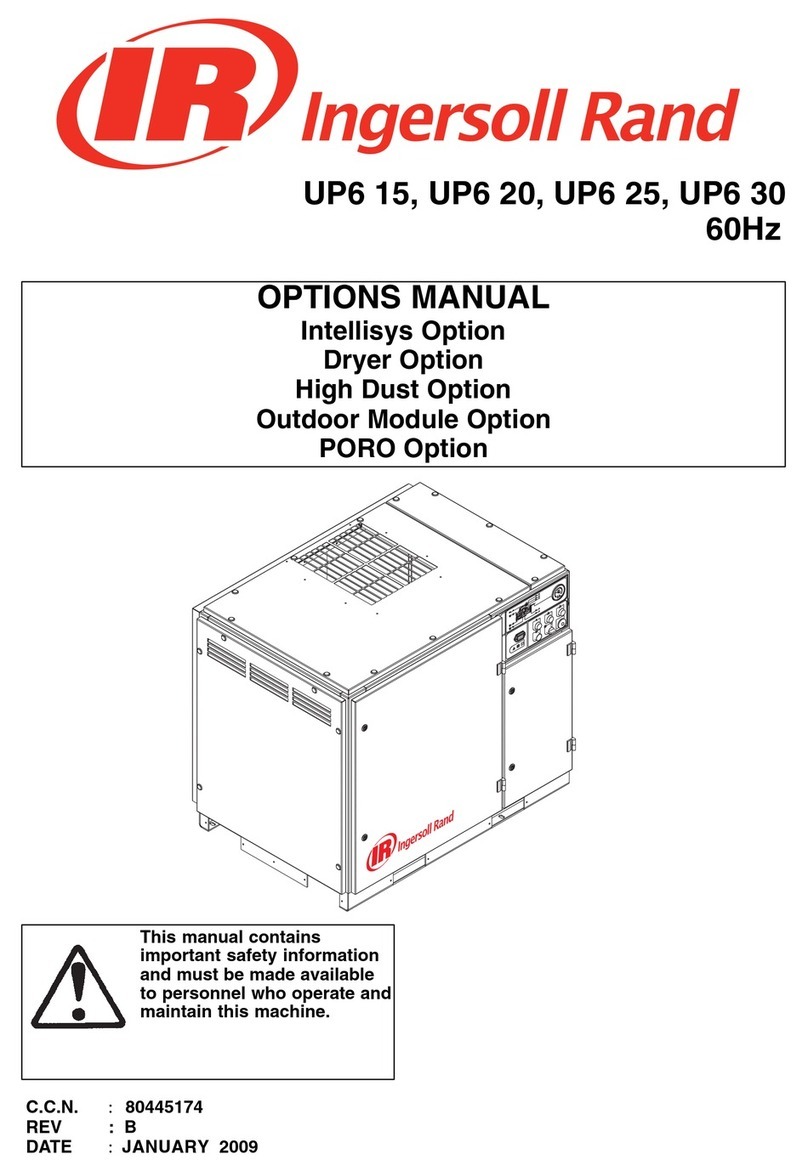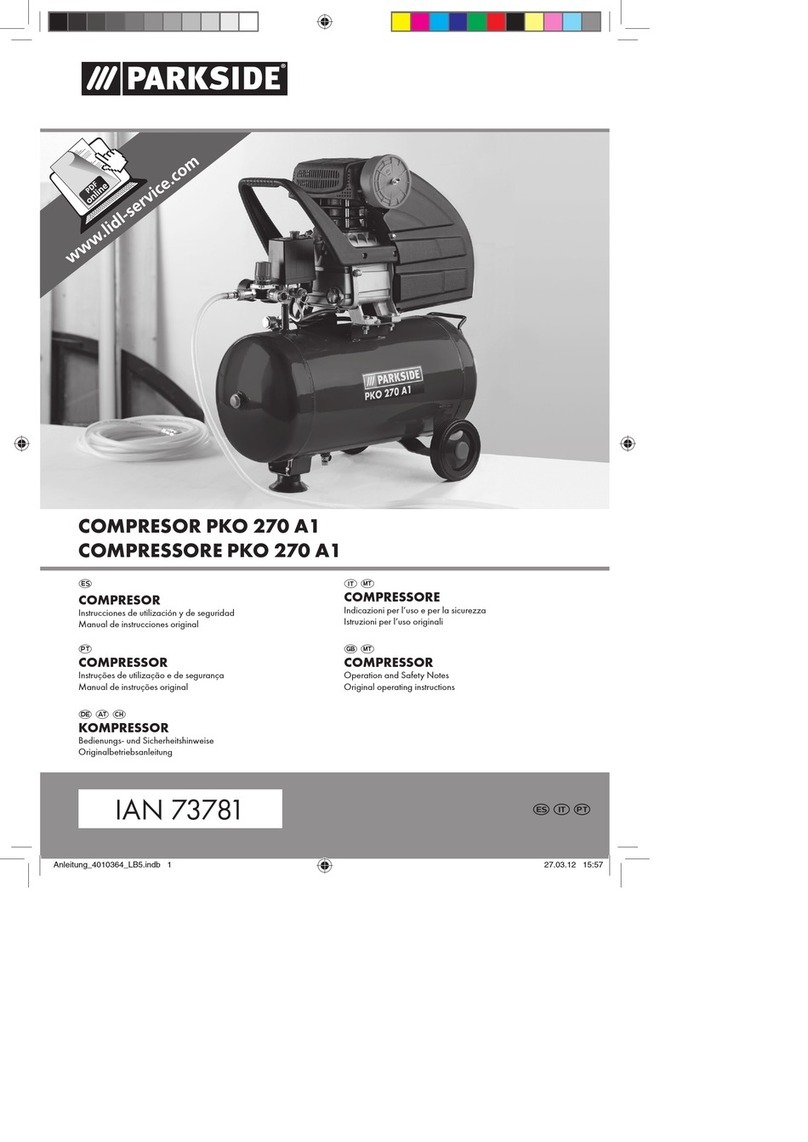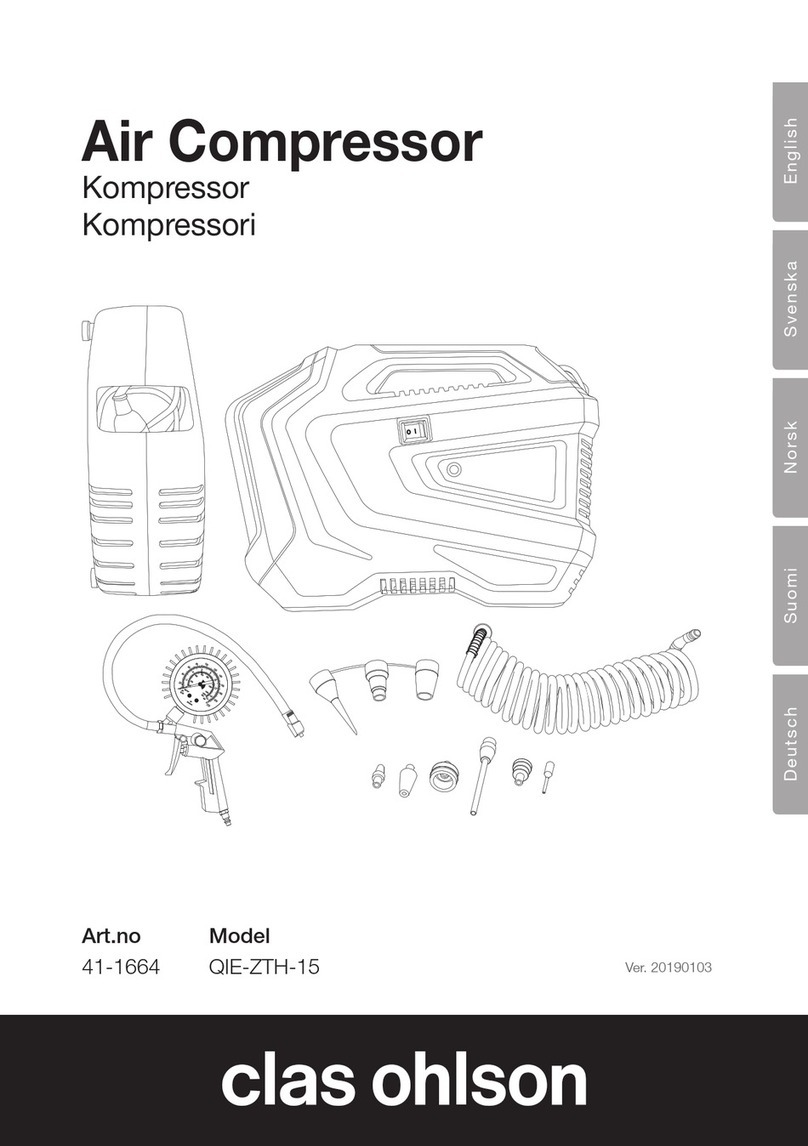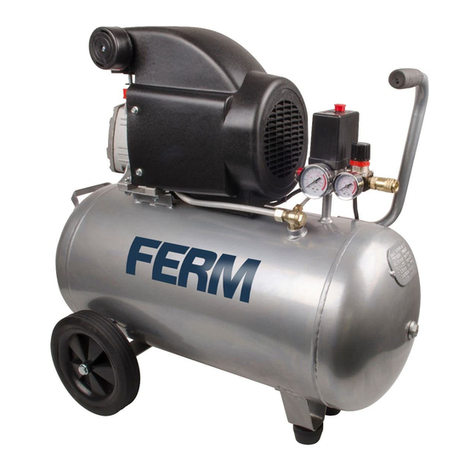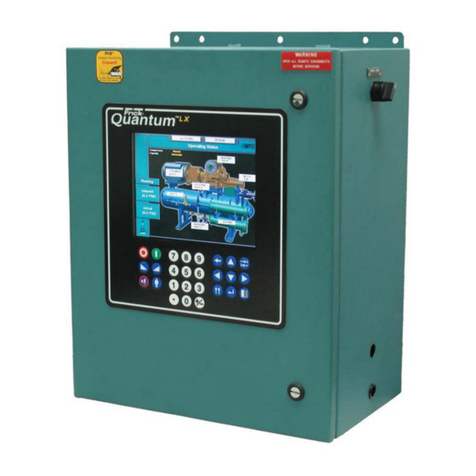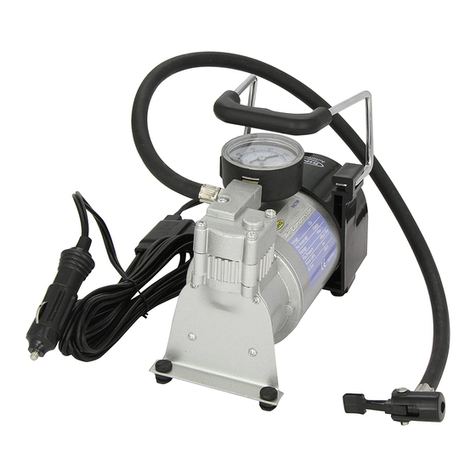
RWB II ROTARY SCREW COMPRESSOR UNITS
INSTALLATION - OPERATION - MAINTENANCE
S70-200 IOM
Page 2
Contents
Maintenance
GENERAL INFORMATION..............................................25
NORMAL MAINTENANCE OPERATIONS......................25
GENERAL MAINTENANCE............................................25
COMPRESSOR SHUTDOWN and START-UP................25
GENERAL INSTRUCTIONS FOR REPLACING
COMPRESSOR UNIT COMPONENTS.....................26
OIL FILTER (OF-1) MAIN SINGLE/DUAL .......................26
STRAINER - DEMAND OIL PUMP .................................26
STRAINER - LIQUID INJECTION...................................27
COALESCER FILTER ELEMENT(S)...............................27
CHANGING OIL ..............................................................27
DEMAND PUMP DISASSEMBLY....................................28
TROUBLESHOOTING THE DEMAND PUMP.................30
RECOMMENDED MAINTENANCE PROGRAM.............32
VIBRATION ANALYSIS ...................................................32
MOTOR BEARINGS........................................................32
OIL QUALITY and ANALYSIS .........................................32
OPERATING LOG...........................................................33
MAINTENANCE SCHEDULE..........................................33
TROUBLESHOOTING GUIDE........................................34
ABNORMAL OPERATION
ANALYSIS and CORRECTION................................34
SERVICING THE COLD-START VALVE..........................34
PRESSURE TRANSDUCERS - TESTING......................34
PRESSURE TRANSDUCERS - REPLACEMENT ..........35
SV POSITION POTENTIOMETER
REPLACEMENT AND ADJUSTMENT.....................36
VOLUMIZER®POTENTIOMETER
REPLACEMENT AND ADJUSTMENT.....................36
TEMPERATURE and/or PRESSURE ADJUSTMENT.....37
OIL LEVEL TRANSMITTER REPLACEMENT................37
TROUBLESHOOTING
RWB II COMPRESSOR...........................................37
OIL SEPARATION SYSTEM ....................................38
HYDRAULIC SYSTEM.............................................38
LIQUID INJECTION OIL COOLING SYSTEM.........39
DEMAND PUMP SYSTEM.......................................39
THERMAL EXPANSION VALVES....................................40
JORDANTEMPERATURE REGULATOR VALVE.............41
BARE COMPRESSOR MOUNTING...............................42
SHUTDOWN DUE TO IMPROPER OIL PRESSURE ....42
GREASE COMPATIBILITY..............................................42
NLGI Grease Compatibility Chart....................................42
P & I DIAGRAMS............................................................43
PROPER INSTALLATION OF ELECTRONIC EQUIP-
MENT IN AN INDUSTRIAL ENVIRONMENT..........47
FORMS
OPERATING LOG SHEET.......................................50
COMPRESSOR PRESTART CHECKLIST ..............51
START-UP REPORT ................................................52
VIBRATION DATA SHEET........................................54
RECOMMENDED SPARE PARTS..................................55
Indicates an imminently hazardous situation which, if not avoided, will result in death or serious
injury.
Indicates a potentially hazardous situation or practice which, if not avoided, will result in death
or serious injury.
SAFETY PRECAUTION DEFINITIONS
Indicates a potentially hazardous situation or practice which, if not avoided, will result in dam-
age to equipment and/or minor injury.
NOTE: Indicates an operating procedure, practice, etc., or portion thereof which is essential to highlight.
PREFACE..........................................................................3
DESIGN LIMITATIONS......................................................3
JOB INSPECTION.............................................................3
TRANSIT DAMAGE CLAIMS ............................................3
COMPRESSOR and UNIT IDENTIFICATION...................3
Installation
FOUNDATION ...................................................................4
RIGGING and HANDLING ................................................4
SKID REMOVAL................................................................4
MOTOR MOUNTING.........................................................5
CHECKING MOTOR/COMPRESSOR ROTATION..............5
COMPRESSOR/MOTOR COUPLINGS INSTALLATION...5
COUPLING ALIGNMENT PROCEDURE..........................7
HOT ALIGNMENT OF COMPRESSOR/MOTOR................9
OIL PUMP COUPLING......................................................9
HOLDING CHARGE AND STORAGE...............................9
COMPRESSOR UNIT OIL ................................................9
OIL CHARGE ....................................................................9
OIL HEATER(S).................................................................9
OIL FILTER(S).................................................................10
THERMOSYPHON OIL COOLING..................................10
LIQUID INJECTION OIL COOLING (OPTIONAL)...........11
LIQUID LINE SIZES/RECEIVER VOLUME.....................12
WATER-COOLED OIL COOLING (Optional)...................12
ECONOMIZER - HIGH STAGE (OPTIONAL)..................12
ELECTRICAL ..................................................................14
MOTOR STARTER PACKAGE ........................................14
MINIMUM BURDEN RATINGS........................................15
CONTROL POWER REGULATOR..................................16
Operation
OPERATION and START-UP INSTRUCTIONS...............17
TDSH COMPRESSOR....................................................17
COMPRESSOR LUBRICATION SYSTEM......................17
NO PUMP OIL SYSTEM.................................................17
COLD-START SYSTEM ..................................................17
DEMAND PUMP OIL SYSTEM.......................................18
COMPRESSOR OIL SEPARATION SYSTEM.................18
COMPRESSOR HYDRAULIC SYSTEM.........................19
VOLUMIZER®VOLUME RATIO CONTROL....................19
COMPRESSOR OIL COOLING SYSTEMS....................20
SINGLE-PORT LIQUID INJECTION ...............................20
RWB II BOOSTER OR SWING DUTY APPLICATION....20
DUAL-PORT LIQUID INJECTION...................................20
LIQUID INJECTION ADJUSTMENT PROCEDURE .......20
QUANTUM™ EZ-COOL™LIQUID INJECTION
ADJUSTMENT PROCEDURE.................................21
SUCTION CHECK VALVE...............................................22
SUCTION CHECK VALVE BYPASS................................23
LOW AMBIENT OPERATION..........................................23
SUCTION CHECK VALVEPOWER ASSIST KIT.............23
INITIAL START-UP ..........................................................24
INITIAL START-UP PROCEDURE ..................................24
NORMAL START-UP PROCEDURE...............................24
